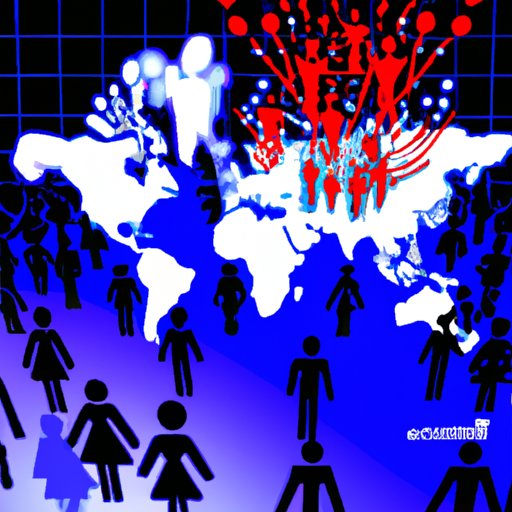Introduction
Technology is any system or process that enables people to produce and use goods and services more efficiently. It has been a driving force for societal progress for millennia, and its effects on population growth are no exception. In recent years, technological advances have had an increasingly significant impact on human population growth. This article will explore how technology affects human population growth, focusing on its effects on reproduction, family planning, migration, population density, and fertility rates.
Impact of Technology on Reproductive Health
Technological advances have enabled improved access to healthcare for many populations around the world. Access to quality medical care can improve reproductive health outcomes, reducing the risk of maternal and infant mortality. According to the World Health Organization, “Access to quality health care and information is essential to improve reproductive health outcomes and reduce the burden of disease.”
In addition to improved access to healthcare, technology has also raised awareness of sexual health. The internet and social media have enabled people to access reliable information about contraception, sexually transmitted diseases, and other important topics related to sexual health. This increased awareness can help individuals make informed decisions about their reproductive health and reduce the risk of unwanted pregnancies.
Contraceptive technology has also enabled people to better control their fertility and plan their families. From hormonal contraceptives to long-acting reversible contraceptives (LARCs), there are now a variety of options available to both men and women. These technologies have helped to reduce the rate of unintended pregnancies and given people more control over their reproductive choices.
The Role of Technology in Promoting Family Planning
Technology has also played a role in promoting family planning. Online platforms such as apps and websites provide educational information and resources to people seeking to plan their families. These platforms enable people to learn more about contraception, find local clinics, and access advice from medical professionals.
In addition, technology has enabled governments to automate family planning programs. Automated systems can streamline the process of enrolling in family planning programs and ensure that eligible individuals receive the support they need. Automation can also help to reduce administrative costs and improve program efficiency.
Effect of Technology on Migration Patterns
Technology has also had an impact on migration patterns. The internet and social media have enabled people to connect with each other across borders, making it easier for individuals to find work and travel abroad. In addition, technological advances in transportation have made international travel more accessible and affordable, enabling people to move to different countries more easily.
Immigration policies have also been influenced by technology. Governments have used technology to track and monitor people entering and leaving their countries. This has enabled them to better regulate immigration and ensure that only those with valid visas are allowed to enter.

Influence of Technology on Population Density
Technology has also had an effect on population density. Urbanization, or the movement of people from rural areas to cities, has been accelerated by technological advances such as improved transportation networks and better access to jobs and services. This has enabled people to live closer together in cities, resulting in higher population densities.
In addition, technology has enabled the use of big data to better understand population trends. Big data can be used to identify population hotspots and predict future population movements, giving governments and organizations the information they need to plan for future growth.

Exploring the Relationship Between Technology and Human Fertility Rates
The relationship between technology and fertility rates is complex. Technological advances have changed traditional marriage and family structures, leading to a decrease in fertility rates in some societies. For example, according to a study published in 2018, the introduction of the birth control pill in the 1960s led to a decrease in fertility rates in the United States.
Technology has also contributed to the reversal of traditional gender roles. Women are now able to pursue careers outside of the home, resulting in delayed childbearing and lower fertility rates. This is especially true in developed countries where access to education and employment opportunities is more widely available.

Assessing the Impact of Technology on Population Age Structure
Technology has also had an impact on population age structure. Advances in medicine and healthcare have increased life expectancy, resulting in an aging population. This has implications for the workforce, as older workers may be less productive than younger ones. It also means that fewer young people are entering the workforce, which could lead to a shortage of skilled labor in the future.
Conclusion
In conclusion, technology has had a profound effect on human population growth. It has enabled improved access to healthcare, increased awareness of sexual health, and promoted family planning. It has also had an effect on migration patterns, population density, and fertility rates, as well as influencing population age structure. As technology continues to evolve, its impact on population growth is likely to become even more pronounced.
(Note: Is this article not meeting your expectations? Do you have knowledge or insights to share? Unlock new opportunities and expand your reach by joining our authors team. Click Registration to join us and share your expertise with our readers.)
